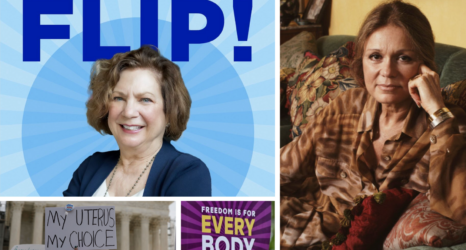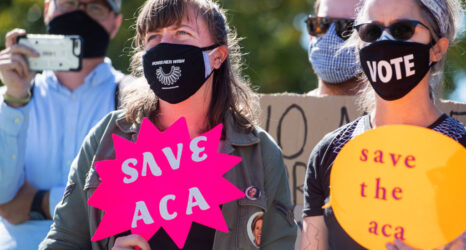From May 16 to 19 this year, advocates from around the world are coming together in Copenhagen for the Women Deliver conference. As they work to improve the lives of women and girls, we’re spotlighting their work and experiences here on the Ms. blog.
The 2016 Women Deliver conference is an unprecedented gathering of the some of the world’s most committed women and men. Midwives, Presidents, youth advocates, physicians, policymakers and mothers fill rooms to take stock of our successes, our failures and our future efforts to improve the health and well-being of women around the world. We learn that much has changed—the challenges of pregnancy-related complications and HIV and AIDS have been forcefully and creatively tackled for many and in most countries. We also know that in order to protect those hard-earned successes, we must now turn to the diseases that are increasingly taking the lives of women—often mothers in their most productive years.
Cervical cancer is the silent killer of the world’s most vulnerable women. Each year, 266,000 women lose their lives to cervical cancer. Of these deaths, 85 percent of the lives lost are in low- and middle-income countries where the mortality rates are more than 10 times that of industrialized countries. Cervical cancer now surpasses pregnancy-related complications as a leading killer of women in low- and middle-income countries.
Compared to the steep challenges of unsafe pregnancy and HIV and AIDS, preventing and controlling cervical cancer is simple, necessary and long overdue. Affordable vaccines for girls and effective screening and preventive treatment technologies for women exist and work even in the most challenging settings.
So what’s missing?
First, the global community must embrace a broader perspective on women and of our commitment to women. For decades, our global efforts have focused on the prevention of unwanted pregnancy, HIV / AIDS and pregnancy-related complications. As one of the founders of UNAIDS, I don’t question the importance of these priorities. But with solid gains in these areas, I believe our focus should now expand to women’s health and rights beyond their childbearing years. It’s time we consider women as women, and not just as mothers or vulnerable adolescents. Supporting women and providing for their health needs not just within, but beyond their childbearing years is step to recognizing women’s broader contributions to society. As cervical cancer is a preventable disease that threatens the most vulnerable women in their post-childbearing years, we should start here.
Second, we need resources—both political and financial. Cervical cancer must no longer be an after thought in women’s health services and policies. A recent study commissioned by the American Cancer Society and conducted by the Harvard School of Public Health found that a woman could be screened, and if necessary, provided precancerous treatment for just $8.36. A girl can be fully vaccinated for $14.13. The study estimates that $3.64 billion will be necessary over the next decade to scale up vaccination of girls and screening programs in low- and lower-middle-income countries. This will allow us to reach 30- to 49 year-old women at least once in their lifetime and treat cervical lesions before they progress to cancer. This is pocket change compared to other investments, governments and donors are being asked to make.
My organization, the American Cancer Society, is partnering with several other likeminded organizations to launch an initiative that will help take cervical cancer prevention to scale. We plan to create a platform to make our independent and collective efforts more effective, while catalyzing greater investment and commitment from an expanded group of partners. We welcome others to join us.
As a lifetime advocate for women and women’s health, I know that we must take on cervical cancer with the same passion and impatience that we did with maternal mortality and HIV. How to do this twenty years later is a question I am struggling with. What is clear is that cervical cancer is the map of inequity of our time, and we must work together to tackle it.
Photo courtesy of Pan American Health Organization on Flickr and licensed under Creative Commons 3.0





